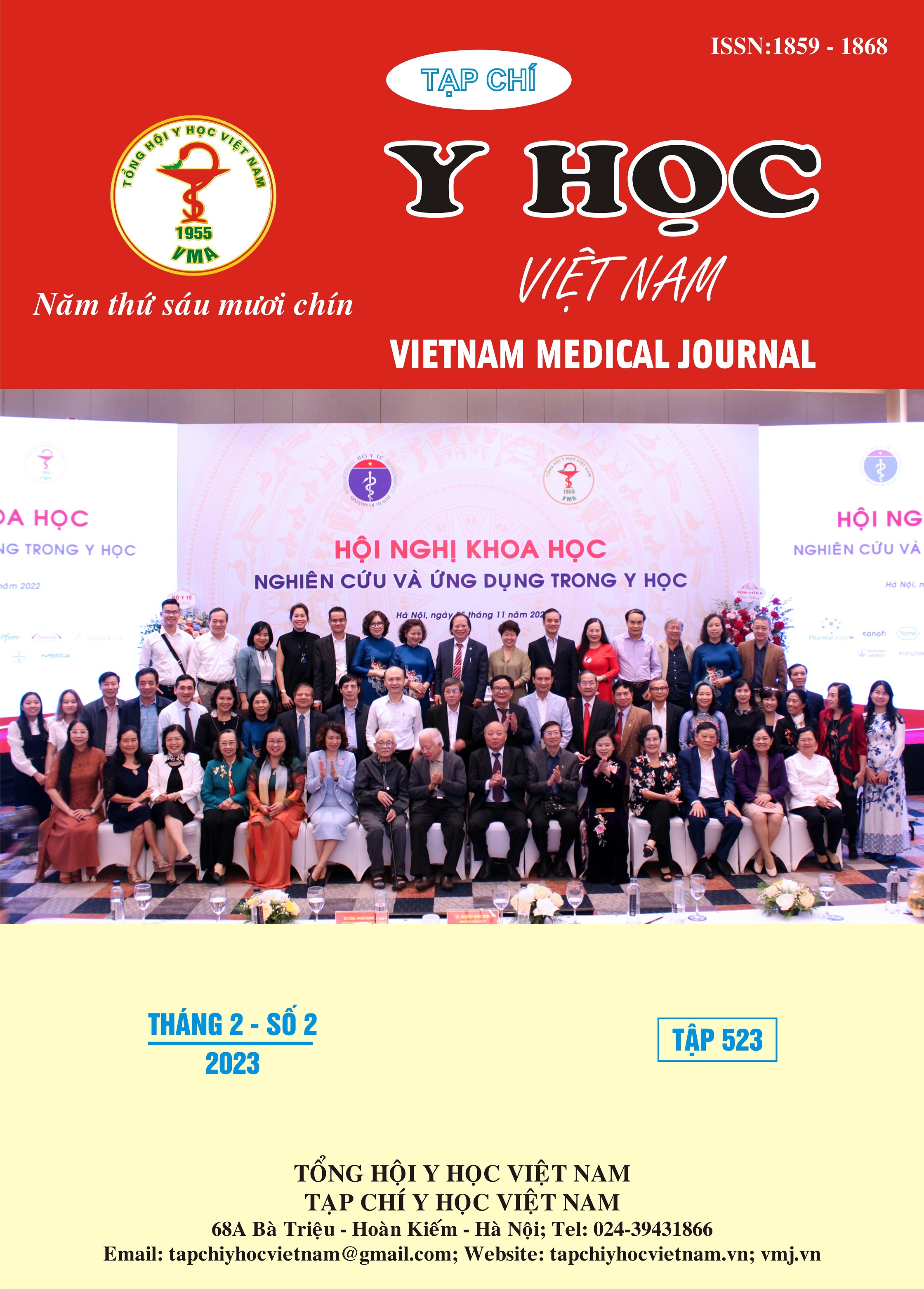INVESTIGATING ON ANTIBIOTIC USE IN THE TREATMENT OF URINARY TRACT INFECTIONS AT THONG NHAT GENERAL DONG NAI HOSPITAL
Main Article Content
Abstract
Introduction: This study was designed to determine types and resistance rates of pathogens that caused Urinary tract infections (UTIs) and treatment results at Thong Nhat general Dong Nai hospital. Methods: A descriptive cross-sectional study was conducted on 171 medical records diagnosed with UTIs from January 2020 to December 2020 at Urology Department at Thong Nhat general Dong Nai hospital. Results: The age of the study population was (51.7 ± 17.8), 52% were female, in the total of research samples there are 113 patients (66.1%) with at least 1 comorbidity, the most common comorbidities were hypertension diseases (18.7%), complicating factors for urinary tract infections (urinary structural abnormalities accounted for 62.6%), 57.9% were patients sampled for antibiogram, ratio positive was 48.5%, there are 34 cases identifying 1 bacteria and 2 cases identifying 2 bacteria, strains (73.7%) of gram-negative, of which Escherichia coli 39.5% was the most common bacteria, Proteus mirabilis 7.9%, Klebsiella pneumonia 7.9%, Pseudomonas aeruginosa 7.9%. Research results these bacteria have high resistance antibiotics: Escherichia coli resistant to 100% of cefazolin, cefotaxime, cefotetan and cefepime while other resistant antibiotics also have a resistance rate of over 50% of ampicillin, ceftriaxone, ceftazidime, ciprofloxacin. The results of diagnostic treatment decreased-hospital discharge accounted for the majority. Conclusion: The cause of UTIs was mainly due to Gram-negative organisms: Escherichia coli, Proteus mirabilis, Klebsiella pneumonia, Pseudomonas aeruginosa... These bacteria have high resistance antibiotics cefazolin, cefotaxime, ampicillin, ceftriaxone. Antibiotic resistance of bacteria is increasing in general and especially in the treatment of UTI in particular. Therefore, the regular provision antibiotic resistance of bacteria is necessary for doctors in treatment. Most of patients were discharged with improvement in symptoms.
Article Details
Keywords
Urinary tract infections, bacteria, antibiotic.
References
2. Ramakrishnan K., Scheid D. C. (2005), "Diagnosis and management of acute pyelonephritis in adults", Am Fam Physician. 71 (5), 933-942.
3. Phạm Thuý Yên Hà, Chung Khả Hân, Đặng Nguyễn Đoan Trang. (2022), "Khảo sát tình hình sử dụng kháng sinh trong điều trị nhiễm khuẩn đường tiết niệu tại khoa Tiết Niệu Bệnh viện Đại học Y Dược Tp. Hồ Chí Minh", Tạp chí Y học Việt Nam. 517 (1), 132-138.
4. Nguyễn Thị Nhung, Lưu Thị Bình (2021), "Đặc điểm bệnh nhân nhiễm khuẩn tiết niệu phức tạp điều trị tại Bệnh viện Trung Ương Thái Nguyên", Tạp chí Y học Việt Nam. 508 (2), 1-6.
5. Vũ Thị Thuý An, Nguyễn Thanh Hải, Bùi Thị Hương Quỳnh và cs. (2022), "Đánh giá hiệu quả của công tác dược lâm sàng và chương trình quản lý sử dụng kháng sinh trong điều trị nhiễm trùng đường tiết niệu tại Bệnh viện Thống Nhất", Tạp Chí Y học Việt Nam. 511 (1), 92-96.
6. Kaye K. S., Bhowmick T., Metallidis S. et al. (2018), "Effect of Meropenem-Vaborbactam vs Piperacillin-Tazobactam on Clinical Cure or Improvement and Microbial Eradication in Complicated Urinary Tract Infection: The TANGO I Randomized Clinical Trial", Jama. 319 (8), 788-799.
7. Phạm Thế Anh, Nguyễn Phúc Cẩm Hoàng, Ngô Xuân Thái, (2019), "Đánh giá kết quả chẩn đoán và điều trị nhiễm khuẩn đường tiết niệu ban đầu tại phòng khám tiết niệu Bệnh viện Bình Dân", Y học TP. Hồ Chí Minh. Phụ Bản Tập 23 (Số 3), 96-101.
8. Lê Đình Khánh, Lê Đình Đạm, Hồ Thị Ngọc Sương và cs. (2018), "Tình hình nhiễm khuẩn đường tiết niệu tại khoa ngoại tiết niệu Bệnh viện trường Đại học Y Dược Huế". Tập 8 ( 03), 100-108.


